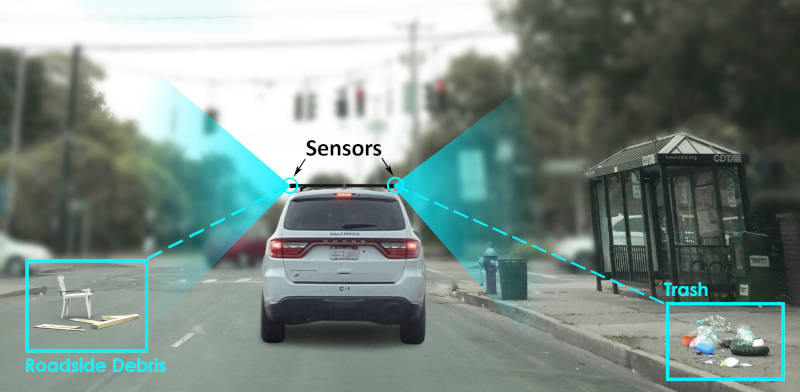Sensor enabled AI models for Public Infrastructure and Asset Management
Governments around the world are exploring data-driven and artificial intelligence (AI) enabled decision-making to produce more informed decisions, ensure efficient resource allocation, and contribute to public service improvements.
For many local governments, managing public infrastructure and more specifically physical assets related to transportation, water, power and energy, education, telecommunications, health, property, recreation, etc. often requires spending considerable time using manual processes to identify conditions that are not in compliance with established laws, such as building codes, zoning regulations, and health and safety standards. One example of such a persistent and costly problem for local governments that could benefit from data-driven and artificial intelligence enabled tools is the management of government owned and managed blighted and vacant properties. Blighted and vacant properties contribute to public health risks, crime, and reduced property values, all of which collectively affect the quality of life of residents.
To help local governments improve their data-driven capabilities and leverage AI tools with a particular focus on managing public infrastructure and other assets, the Center for Technology in Government at the University at Albany (CTG UAlbany) is working with cities in the capital region of New York State on the development and testing of a low-cost mobile Internet of Things (IoT) sensor network and AI analysis system called the Community Asset Tracker (CAT). The CAT can fully automate and enhance the tracking of public infrastructure and other assets and provide a near real-time identification of changes in their condition or potential issues of concern based on a specific set of key indicators as determined by local governments. The analysis provided by the CAT to local governments supports quicker and better-informed short-term decision making and longer-term planning, therefore better ensuring the wellbeing of the community.
Press Releases & News Stories
- https://www.albany.edu/news-center/news/2024-ctg-ualbany-deploys-ai-assist-local-governments
- https://www.albany.edu/news-center/news/2024-ctg-ualbany-students-using-ai-help-city-schenectady-track-government
- https://www.rfsuny.org/rf-news/ualbany-taf-werthmuller-pardo/ualbany-taf-werthmuller-pardo.html
Publications & Results
Leon, Michelle. (2024). The Community Asset Tracker. [Poster Presentation]. Center for Technology in Government, University at Albany, State University of New York.
Presentations
“Artificial intelligence, citizen engagement, co-creation, urban blight, data strategies”. Smart City Expo. Barcelona (Spain), November, 2024.
“Fighting urban inequality in small and mid-sized cities through artificial intelligence”. Smart City Expo. Barcelona (Spain), November, 2023.
Partners
This project is led by the Center for Technology in Government (CTG) in partnership with the City of Schenectady.
Funding Sources
The SUNY (State University of New York) Technology Accelerator Fund (TAF) is the primary source of funding to support innovation across the SUNY research community and to accelerate the commercialization of inventions.
NVIDIA Applied Research Accelerator Program
